What is CPVC Piping System
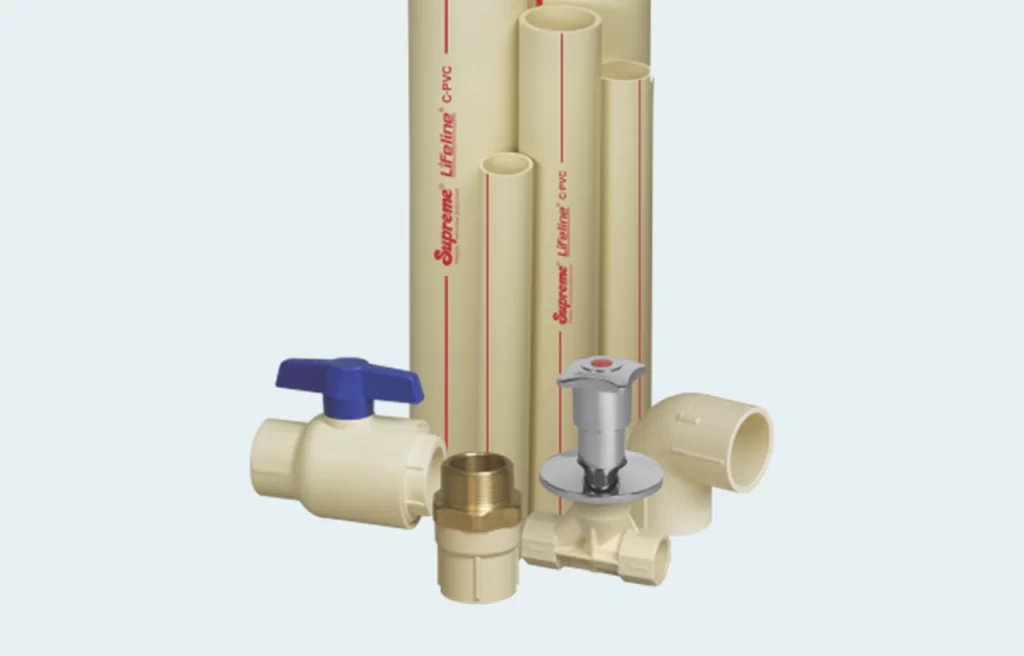
CPVC, which stands for Chlorinated Polyvinyl Chloride, is a type of plastic piping system that is commonly used for plumbing applications. CPVC pipes and fittings offer several advantages over other materials, making them a popular choice in both residential and commercial settings.
CPVC pipes are known for their durability and strength. They are highly resistant to corrosion, which means they can withstand harsh chemicals and acidic substances commonly found in water systems. This makes CPVC pipes a reliable option for transporting both hot and cold water, as well as various fluids and chemicals.
One of the key advantages of CPVC piping systems is their ease of installation. CPVC pipes are lightweight and can be easily cut, joined, and secured using CPVC pipe fittings. The fittings are designed to connect the pipes securely, ensuring a leak-free system. The installation process is simpler compared to traditional metal pipes, reducing labor time and costs.
CPVC pipes and fittings also provide excellent thermal insulation properties. They have a low thermal conductivity, which means they help maintain the temperature of the water flowing through them. This can result in energy savings by reducing heat loss and minimizing the need for additional insulation materials.
Another notable benefit of CPVC piping systems is their affordability. CPVC pipes and fittings are generally more cost-effective than metal alternatives like copper or stainless steel. This makes them a budget-friendly option for plumbing projects without compromising on performance and durability.
In summary, CPVC piping systems offer a reliable, durable, and cost-effective solution for plumbing applications. With their resistance to corrosion, ease of installation, thermal insulation properties, and affordability, CPVC pipes and fittings are widely used in residential, commercial, and industrial settings.
What is The Difference Between PVC and CPVC Pipes?
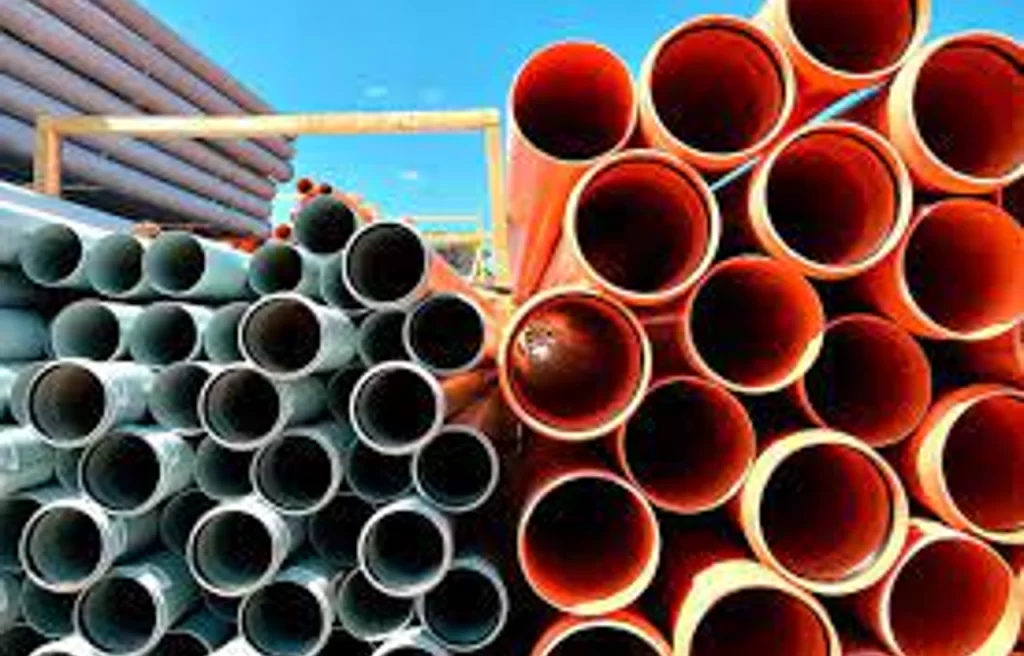
CPVC, which stands for Chlorinated Polyvinyl Chloride, is a type of plastic piping system that is commonly used for plumbing applications. CPVC pipes and fittings offer several advantages over other materials, making them a popular choice in both residential and commercial settings.
CPVC pipes are known for their durability and strength. They are highly resistant to corrosion, which means they can withstand harsh chemicals and acidic substances commonly found in water systems. This makes CPVC pipes a reliable option for transporting both hot and cold water, as well as various fluids and chemicals.
One of the key advantages of CPVC piping systems is their ease of installation. CPVC pipes are lightweight and can be easily cut, joined, and secured using CPVC fittings. The fittings are designed to connect the pipes securely, ensuring a leak-free system. The installation process is simpler compared to traditional metal pipes, reducing labor time and costs.
CPVC pipes and fittings also provide excellent thermal insulation properties. They have a low thermal conductivity, which means they help maintain the temperature of the water flowing through them. This can result in energy savings by reducing heat loss and minimizing the need for additional insulation materials.
Another notable benefit of CPVC piping systems is their affordability. CPVC pipes and fittings are generally more cost-effective than metal alternatives like copper or stainless steel. This makes them a budget-friendly option for plumbing projects without compromising on performance and durability.
In summary, CPVC piping systems offer a reliable, durable, and cost-effective solution for plumbing applications. With their resistance to corrosion, ease of installation, thermal insulation properties, and affordability, CPVC pipes and fittings are widely used in residential, commercial, and industrial settings.
Benefits of CPVC Pipes and Fittings
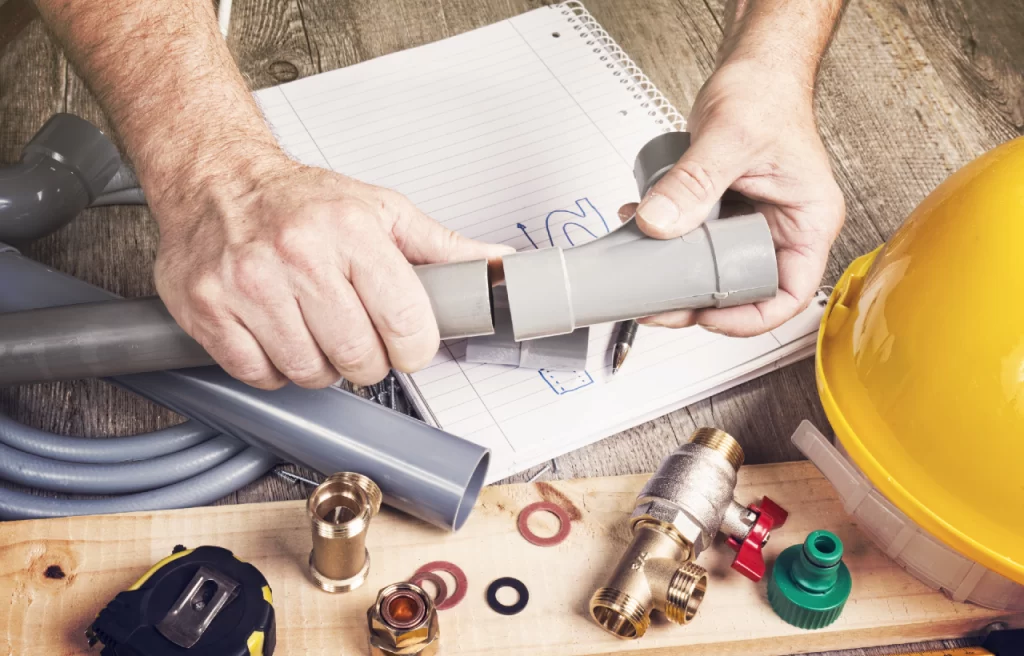
CPVC pipes and fittings provide numerous benefits, making them a popular choice for plumbing systems in residential, commercial, and industrial settings. Here are some key advantages of CPVC pipes and fittings:
- Corrosion Resistance: CPVC pipes and fittings are highly resistant to corrosion, even in aggressive environments. They can withstand exposure to chemicals, acids, and alkaline substances commonly found in water systems, ensuring long-term durability and reliability.
- High Temperature Resistance: CPVC pipes have excellent heat resistance, making them suitable for both hot and cold water applications. They can handle high temperatures without deformation or degradation, ensuring consistent performance and safety.
- Easy Installation: CPVC pipes are lightweight, making them easy to handle and install. They can be cut and joined using simple tools and techniques, and CPVC fittings provide secure connections. The ease of installation saves time and labor costs during plumbing projects.
- Low Thermal Conductivity: CPVC pipes have low thermal conductivity, meaning they have good insulation properties. They help to maintain the temperature of the water flowing through them, reducing heat loss and energy consumption.
- Chemical Resistance: CPVC pipes and fittings have excellent resistance to a wide range of chemicals, including acids, bases, and salts. This makes them suitable for applications where the plumbing system may come into contact with aggressive substances.
- Longevity and Low Maintenance: CPVC pipes and fittings have a long service life and require minimal maintenance. They do not rust, scale, or corrode over time, reducing the need for repairs or replacements.
- Cost-Effective: CPVC pipes and fittings are generally more affordable than alternative materials like copper or stainless steel. Their lower upfront costs, combined with their long-term durability and low maintenance requirements, make them a cost-effective choice for plumbing systems.
In conclusion, CPVC pipes and fittings offer a range of benefits, including corrosion resistance, high temperature resistance, easy installation, low thermal conductivity, chemical resistance, longevity, and cost-effectiveness. These advantages make CPVC an excellent choice for plumbing applications in various settings.
What Makes CPVC the Perfect Choice For Household Plumbing Material?

CPVC (Chlorinated Polyvinyl Chloride) is an excellent choice for household plumbing material due to several key advantages it offers. Here are the reasons why CPVC pipes is considered the perfect choice for household plumbing:
- Corrosion Resistance: CPVC pipes and fittings are highly resistant to corrosion. Unlike metal pipes such as copper or galvanized steel, which can corrode over time, CPVC maintains its integrity and does not corrode, ensuring long-lasting performance and maintaining water quality.
- Chemical Resistance: CPVC exhibits exceptional chemical resistance, making it suitable for handling a wide range of chemicals commonly found in household plumbing systems. It can withstand aggressive chemicals, acids, alkalis, and other substances without deteriorating or leaching harmful materials into the water.
- Temperature Resistance: CPVC Pipes is designed to handle higher temperatures compared to other plastic piping materials. It can withstand hot water systems without deformation or loss of structural integrity. This makes CPVC fittings suitable for both hot and cold water distribution in households.
- Easy Installation: CPVC pipes and fittings are lightweight and easy to install, requiring fewer tools and labor compared to metal pipes. The material is also easy to cut, shape, and join using solvent cement. This ease of installation saves time and effort during the plumbing process.
- Longevity: CPVC pipes have a long lifespan, typically lasting 50 to 75 years or more when installed correctly and used within their design parameters. This longevity provides homeowners with peace of mind, knowing that their plumbing system will remain reliable for decades.
- Cost-effective: CPVC pipes is a cost-effective plumbing material compared to copper or other metal pipes. It generally has a lower upfront cost, making it an attractive option for homeowners on a budget. Additionally, its durability and resistance to corrosion reduce the need for frequent repairs or replacements, resulting in long-term cost savings.
- Health and Safety: CPVC fittings is considered safe for drinking water applications. It does not leach harmful substances into the water supply, ensuring the water remains clean and free from contaminants.
In summary, CPVC’s corrosion resistance, chemical resistance, temperature resistance, easy installation, longevity, cost-effectiveness, and safety make it the perfect choice for household plumbing. Its performance and reliability ensure a durable plumbing system that provides clean water for a comfortable and worry-free living environment.
What is the Expected Lifespan of CPVC Pipes?
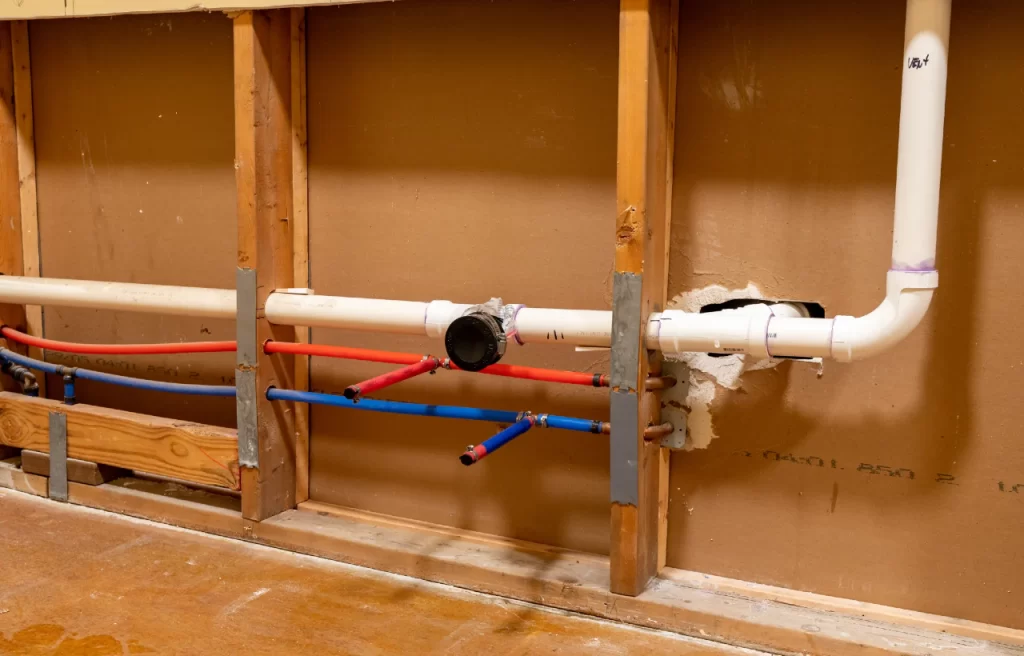
The expected lifespan of CPVC (Chlorinated Polyvinyl Chloride) pipes can vary depending on several factors, including the quality of the materials, installation techniques, and the specific conditions of the plumbing system. However, on average, CPVC pipes are designed to have a lifespan of approximately 50 to 75 years.
CPVC pipes are known for their durability and resistance to corrosion, making them less susceptible to degradation compared to other materials like metal or traditional PVC pipes. They can withstand a wide range of chemicals, including acids and alkalis, without experiencing significant damage. This chemical resistance contributes to their longevity and ensures reliable performance over an extended period.
The installation process also plays a crucial role in determining the lifespan of CPVC pipes. Proper installation techniques, such as ensuring accurate cutting, solvent welding, and securely connecting CPVC fittings, are essential to maintain the integrity of the system. When installed correctly, CPVC pipes provide a leak-free and long-lasting plumbing solution.
It’s important to note that factors like water quality, temperature fluctuations, and pressure variations can impact the lifespan of any plumbing system, including CPVC pipes. Harsh or extreme conditions may affect the performance and longevity of the pipes, potentially shortening their lifespan. Regular inspection and maintenance can help identify any issues early on and ensure the continued reliability of the CPVC system.
In summary, CPVC pipes are designed to have a lifespan of approximately 50 to 75 years. Their inherent resistance to corrosion and durability contribute to their longevity, provided they are installed correctly and maintained appropriately. By following proper installation practices and monitoring the system’s performance, CPVC pipes can offer a reliable and long-lasting plumbing solution.
Are CPVC Pipes and Fittings Resistant to Chlorine?
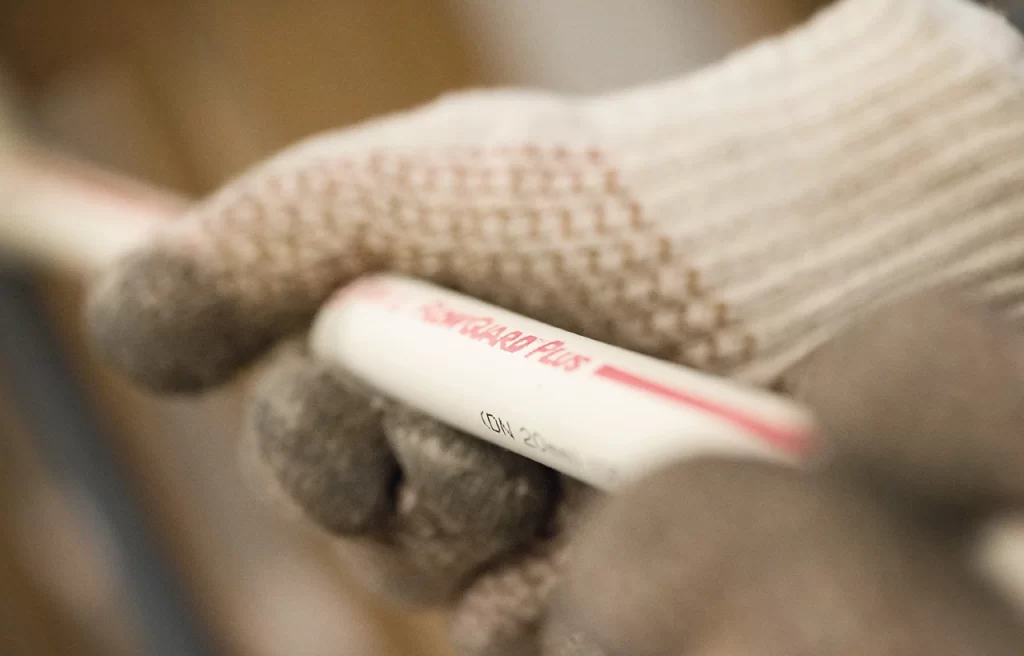
Yes, CPVC (Chlorinated Polyvinyl Chloride) pipes and fittings are highly resistant to chlorine. Chlorine is a common chemical used in water treatment processes, and CPVC is specifically formulated to withstand the effects of chlorine exposure, making it an ideal choice for plumbing systems that come into contact with chlorinated water.
CPVC pipes and fittings have a high resistance to degradation and corrosion when exposed to chlorine. This resistance is due to the chlorination process that the PVC material undergoes during manufacturing. The chlorination increases the CPVC’s ability to withstand harsh chemicals, including chlorine, without experiencing significant damage or deterioration.
Chlorine is known for its oxidizing properties, which can corrode or deteriorate certain materials over time. However, CPVC’s resistance to chlorine makes it suitable for use in applications where the plumbing system is exposed to chlorinated water, such as swimming pools, hot tubs, and water distribution systems that use chlorine for disinfection.
The resistance of CPVC pipes and fittings to chlorine ensures the longevity and reliability of the plumbing system. It prevents the material from becoming brittle, corroded, or weakened due to the presence of chlorine. As a result, CPVC pipes and fittings maintain their structural integrity and performance even when exposed to chlorinated water over an extended period.
It’s important to note that while CPVC is highly resistant to chlorine, it is still essential to follow industry standards and guidelines for the proper installation and maintenance of CPVC systems. Regular inspections and adherence to recommended practices will help ensure the continued resistance and performance of CPVC pipes and fittings in chlorinated environments.
How Long Can CPVC Systems Be Exposed To Sunlight?
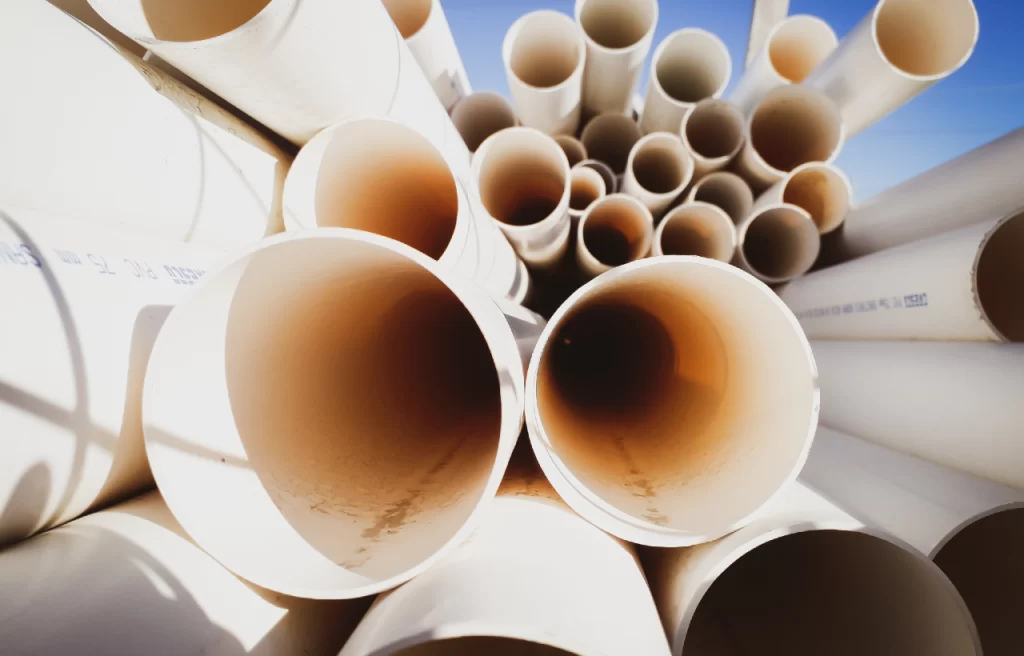
CPVC (Chlorinated Polyvinyl Chloride) systems are designed to be UV-resistant, allowing them to withstand exposure to sunlight for extended periods. However, the exact duration that CPVC pipe and fitting systems can be exposed to sunlight without significant degradation can vary based on various factors.
CPVC pipes and fittings are typically formulated with additives that provide UV resistance. These additives help to protect the material from the damaging effects of ultraviolet (UV) radiation. They prevent the CPVC from becoming brittle, discolored, or deteriorating when exposed to sunlight.
In general, CPVC fitting systems can withstand exposure to sunlight for several years without experiencing significant degradation. Manufacturers often provide guidelines for the maximum allowable exposure time to direct sunlight based on their specific CPVC product formulations. These guidelines can help determine the expected lifespan of CPVC systems under sunlight exposure.
It’s important to note that while CPVC is UV-resistant, prolonged exposure to intense sunlight can still have some impact over time. Factors such as geographic location, climate, and the angle at which the CPVC pipe and fittings is exposed to the sun can influence its performance. In areas with harsh and prolonged sunlight, additional precautions may be necessary to protect the CPVC system, such as utilizing insulation or shading.
To ensure the long-term durability of a CPVC system exposed to sunlight, it is recommended to follow manufacturer guidelines and best practices. Regular inspections can help identify any signs of degradation, such as discoloration or changes in material properties. If necessary, protective measures can be taken to minimize UV exposure, such as applying coatings or utilizing insulation materials.
In summary, CPVC systems are designed to be UV-resistant, allowing them to withstand exposure to sunlight for several years without significant degradation. However, the specific duration of exposure can vary based on factors such as product formulation, geographic location, and climate. Following manufacturer guidelines and taking appropriate protective measures can help maximize the lifespan and performance of CPVC systems under sunlight exposure.
How Does CPVC Compare To Other Materials?
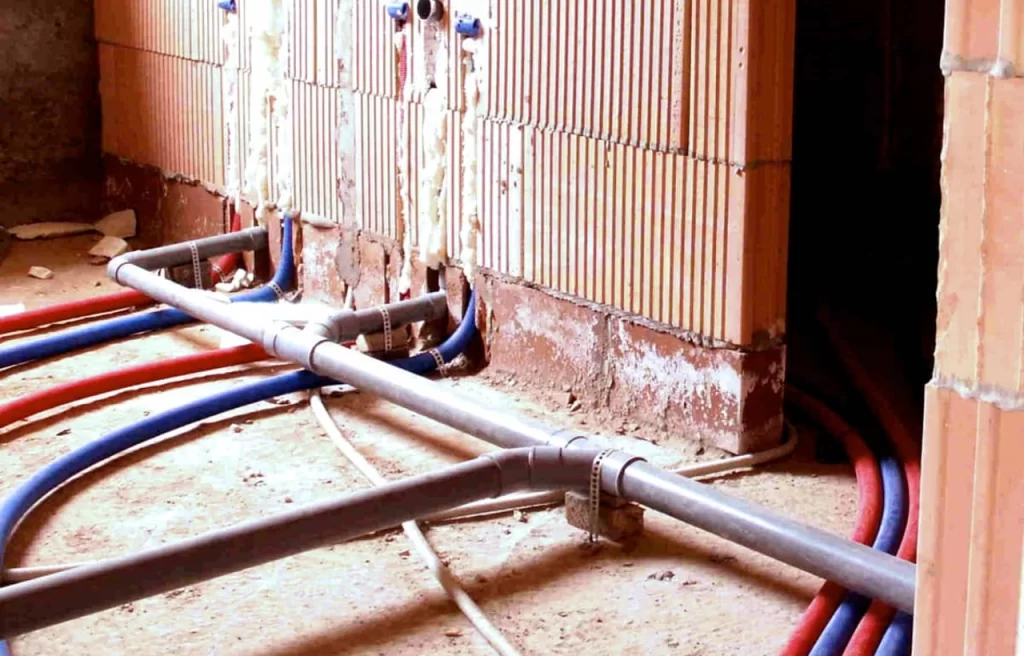
When comparing CPVC (Chlorinated Polyvinyl Chloride) to other materials commonly used for plumbing systems, several factors come into play. Here’s a comparison of CPVC with other materials in terms of key attributes:
- Corrosion Resistance: CPVC pipe in this aspect. It is highly resistant to corrosion, unlike metal pipes such as copper or galvanized steel, which can corrode over time and impact water quality.
- Chemical Resistance: CPVC pipes exhibits excellent resistance to a wide range of chemicals, making it suitable for various applications. Other materials like PVC, PEX, or copper may have limitations in handling certain chemicals.
- Temperature Resistance: CPVC fittings can withstand higher temperatures compared to PVC or PEX. It can handle hot water systems and is suitable for both hot and cold water distribution, whereas PVC may become soft at higher temperatures.
- Installation: CPVC is lightweight, making it easy to handle and install. It requires fewer specialized tools compared to metal pipes like copper, which can be more labor-intensive and time-consuming.
- Cost: CPVC fittings is generally more cost-effective than copper pipes, especially considering the rising prices of copper. While CPVC may have a higher upfront cost compared to PVC or PEX, it offers long-term durability and low maintenance, potentially offsetting the initial investment.
- Longevity: CPVC pipes have a lifespan of around 50 to 75 years, comparable to or even longer than other materials like copper or PVC. PEX pipes may have a similar lifespan but are more sensitive to UV exposure.
- Health and Safety: CPVC is considered safe for drinking water applications, as it doesn’t leach harmful substances into the water. Copper pipes are also safe, but there have been concerns about lead leaching from soldered joints in older copper systems.
In summary, CPVC pipes and fittings offer distinct advantages in terms of corrosion and chemical resistance, temperature handling, ease of installation, and long-term durability. While each material has its strengths and considerations, CPVC fittings is a versatile and reliable choice for plumbing systems in residential, commercial, and industrial settings.
What is The Difference Between CPVC And PVC?
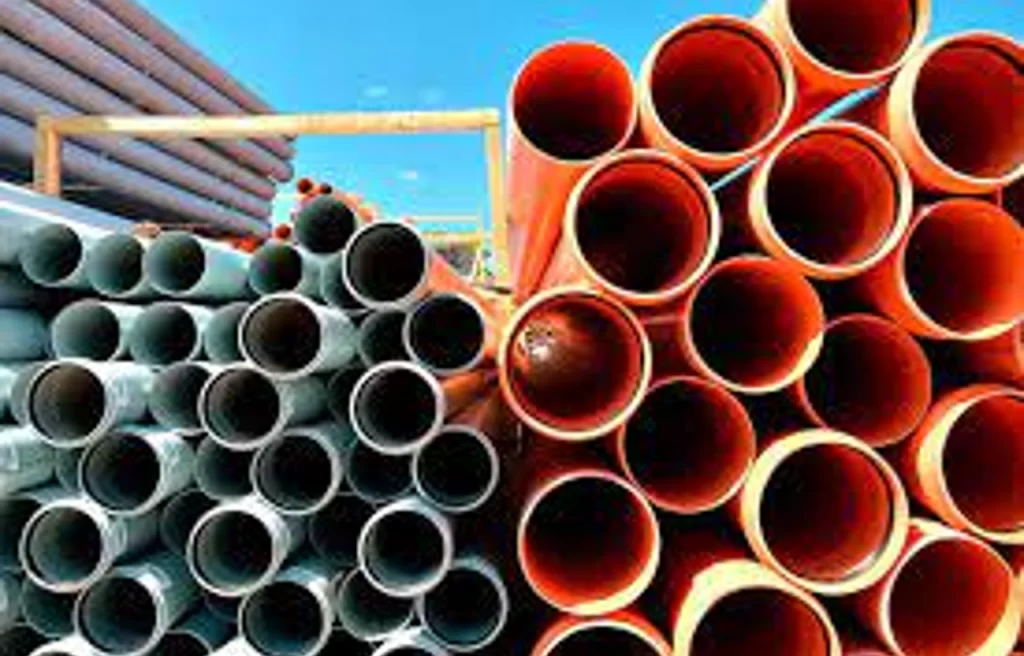
CPVC (Chlorinated Polyvinyl Chloride) and PVC (Polyvinyl Chloride) are two types of plastic piping materials used in various applications. While they share similarities, there are distinct differences between CPVC and PVC. Here’s a comparison of the two:
- Chlorination: The primary difference between CPVC and PVC lies in the chlorination process. CPVC undergoes additional chlorination, which enhances its chemical and temperature resistance compared to PVC. The chlorination increases CPVC’s ability to handle higher temperatures and aggressive chemicals.
- Temperature Resistance: CPVC pipes is designed to handle higher temperatures than PVC. CPVC pipe and fittings can withstand temperatures up to 200°F (93°C), making it suitable for hot water systems, whereas PVC is typically limited to temperatures around 140°F (60°C). PVC may become soft and deform at higher temperatures.
- Chemical Resistance: CPVC Fittings exhibits greater chemical resistance than PVC. It can withstand a broader range of chemicals, acids, and alkalis without corroding or deteriorating. PVC, while generally resistant to many chemicals, may be more susceptible to damage in certain aggressive chemical environments.
- Applications: PVC is commonly used in drainage, sewer, and cold water distribution systems. CPVC pipe fittings, with its higher temperature and chemical resistance, is suitable for hot water supply lines, industrial applications, and where aggressive chemicals may be present. CPVC is also used in fire sprinkler systems due to its fire-resistant properties.
- Cost: PVC is generally more cost-effective than CPVC. PVC pipes and fittings tend to have a lower upfront cost, making them a popular choice for budget-conscious projects. CPVC, with its added benefits, may have a slightly higher price point.
- Codes and Regulations: CPVC and PVC are governed by different building codes and regulations. It’s important to ensure compliance with local codes and standards when selecting the appropriate material for a specific application.
In summary, CPVC pipes and fittings differ primarily in terms of temperature resistance, chemical resistance, and application suitability. CPVC offers enhanced performance in high-temperature and chemical environments, making it a preferred choice for specific applications, while PVC is more commonly used for cold water systems and drainage. Understanding the differences between CPVC and PVC helps in selecting the appropriate material for plumbing projects based on the specific requirements and conditions.
What are CPVC pipes and fittings suitable for?
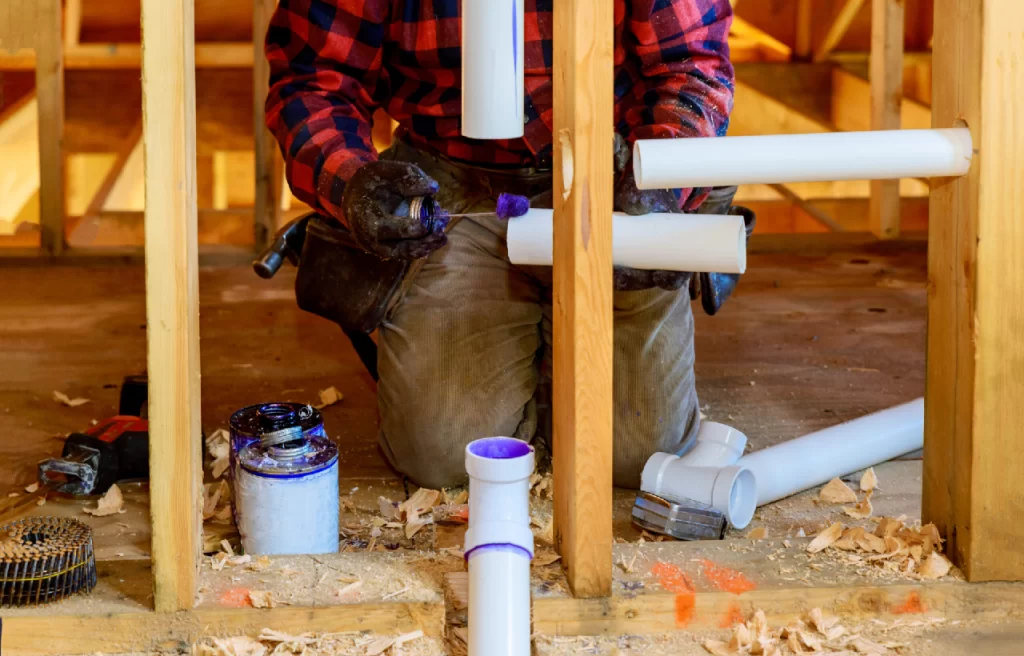
CPVC (Chlorinated Polyvinyl Chloride) pipes and fittings are suitable for a wide range of applications due to their unique properties and advantages. Here are some common uses of CPVC pipes and fittings:
- Hot and Cold Water Distribution: CPVC pipe is widely used for both hot and cold water supply lines in residential, commercial, and industrial buildings. Its high temperature resistance allows it to handle hot water systems, such as water heaters and boilers, without deformation or degradation.
- Plumbing Systems: CPVC pipes and fittings are commonly used in plumbing systems, including potable water systems, water distribution networks, and residential plumbing. They provide reliable and durable connections, ensuring a leak-free plumbing infrastructure.
- Industrial Applications: CPVC’s chemical resistance makes it suitable for various industrial applications where aggressive chemicals or corrosive substances are present. It is commonly used in industrial piping systems for transporting chemicals, acids, and alkalis.
- Fire Sprinkler Systems: CPVC pipes are widely used in fire sprinkler systems due to their fire-resistant properties. CPVC fittings has a low flame spread and is self-extinguishing, making it an ideal choice for fire protection applications.
- Irrigation Systems: CPVC pipes and fittings are suitable for irrigation systems, including agricultural irrigation and landscape irrigation. They offer durability, resistance to chemicals in irrigation water, and ease of installation.
- Process Piping: CPVC is used in various process piping applications, such as in the chemical, pharmaceutical, and food processing industries. Its chemical resistance and temperature capabilities make it suitable for handling a wide range of process fluids.
- Water Treatment: CPVC pipes and fittings are used in water treatment systems, including reverse osmosis systems, filtration systems, and water purification processes. CPVC’s chemical resistance ensures the integrity of the system and the quality of treated water.
In summary, CPVC pipes and fittings are suitable for hot and cold water distribution, plumbing systems, industrial applications, fire sprinkler systems, irrigation systems, process piping, and water treatment applications. Their versatility, chemical resistance, and temperature capabilities make CPVC pipes a reliable choice for various plumbing and piping needs in residential, commercial, and industrial settings.

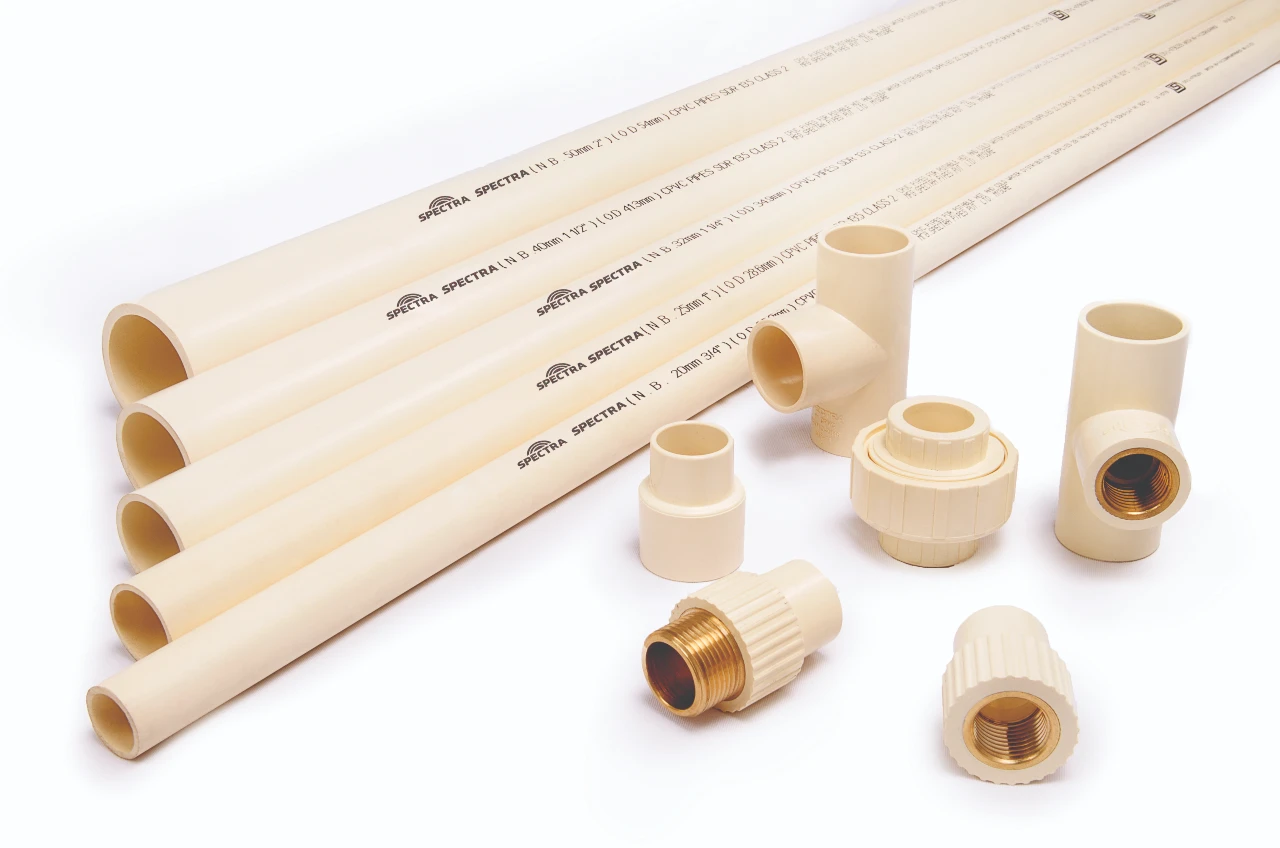

Leave a Reply